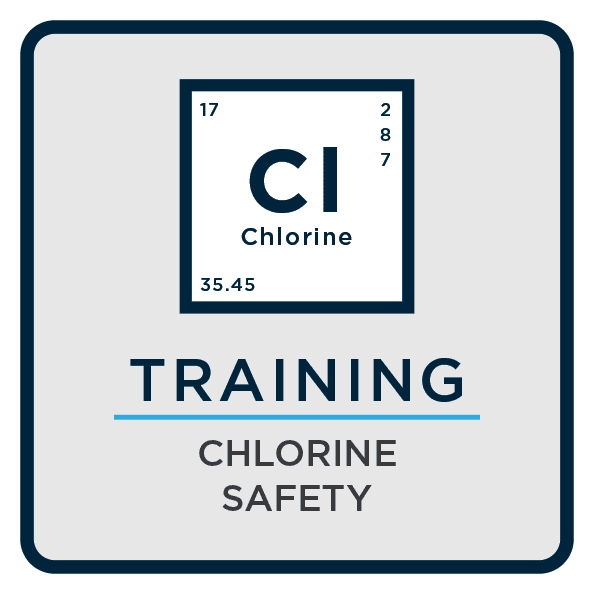Description
Because the use of chlorine is so widespread, you may not think of chlorine as a dangerous chemical. However, in 2005, an incident in Graniteville, S.C., resulted in 18 freight train cars derailing and releasing 120,000 pounds of chlorine gas. 1,400 people were exposed, resulting in 550 hospitals visits, many with serious lung injuries. 5,000 people were evacuated from the surrounding area. Nine were killed.
As you can see, chlorine is a dangerous chemical that must be used with caution.
Upon successful completion of this course, you should be able to:
- Recognize the physical hazards of chlorine in the workplace
- Identify the health hazards of chlorine exposure
- Identify exposure controls to protect against chlorine hazards
- Identify how to respond to a chlorine spill or release
This course was designed to help satisfy requirements of the following regulations:
- OSHA Standards, 29 CFR 1910.1000 and Table Z-1
- Subpart H, “Hazard Materials” pg 22
- Subpart Z, “Vinyl Chloride” pg 46
- OSHA Standards, 29 CFR 1910.1200, “Hazard Communication”
- OSHA 29 1910.119, Appendix A
- OSHA 29 1910.1450, Appendix A for Labs
- OSHA 29 1910.261 for Pulp, Paper and Paperboard Mills
- OSHA 29 1926.64, Appendix A for Construction
- Occupational Safety and Health Act, Section 5 (a), “General Duty Clause”
- Occupational Safety and Health Guideline for Chlorine
- EPA Emergency Planning and Community Right-to-Know Act (EPCRA)
Chlorine Safety Course Topics
- Recognizing chlorine hazards
- Health hazards of chlorine
- Exposure controls
- Event response and first aid
CHLORINE SAFETY COURSE ASSESSMENT: Testing conducted throughout this online course is designed to reinforce the information presented. A mark of 80% must be achieved in order to receive a certificate of completion. Users are able to repeat the course twice if the pass mark is not achieved.
Upon successful completion of this online course, a certificate of completion will be available for download and printing.




